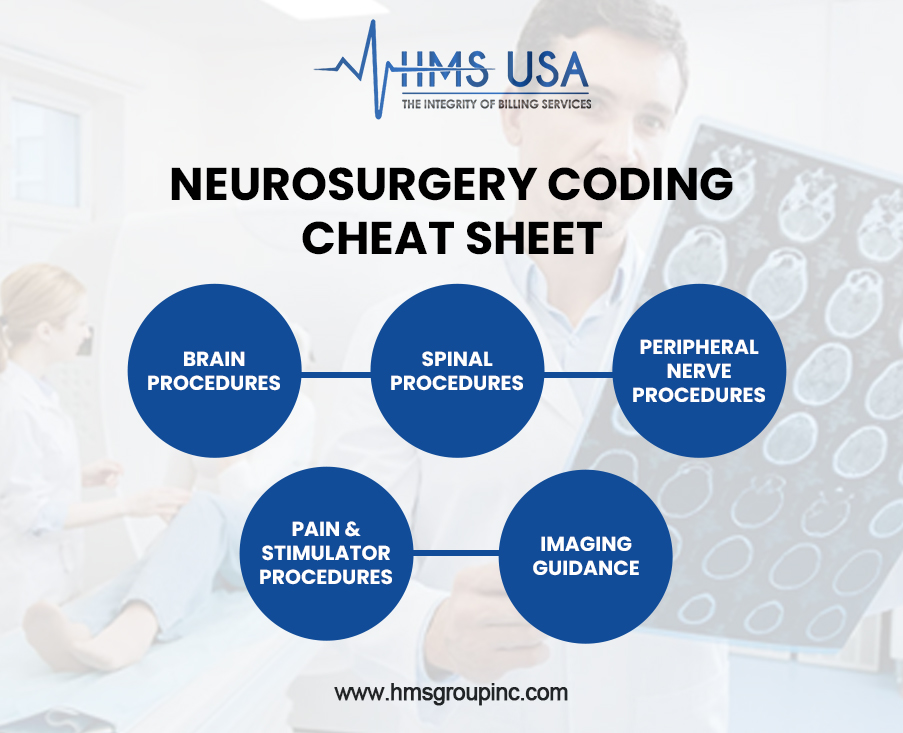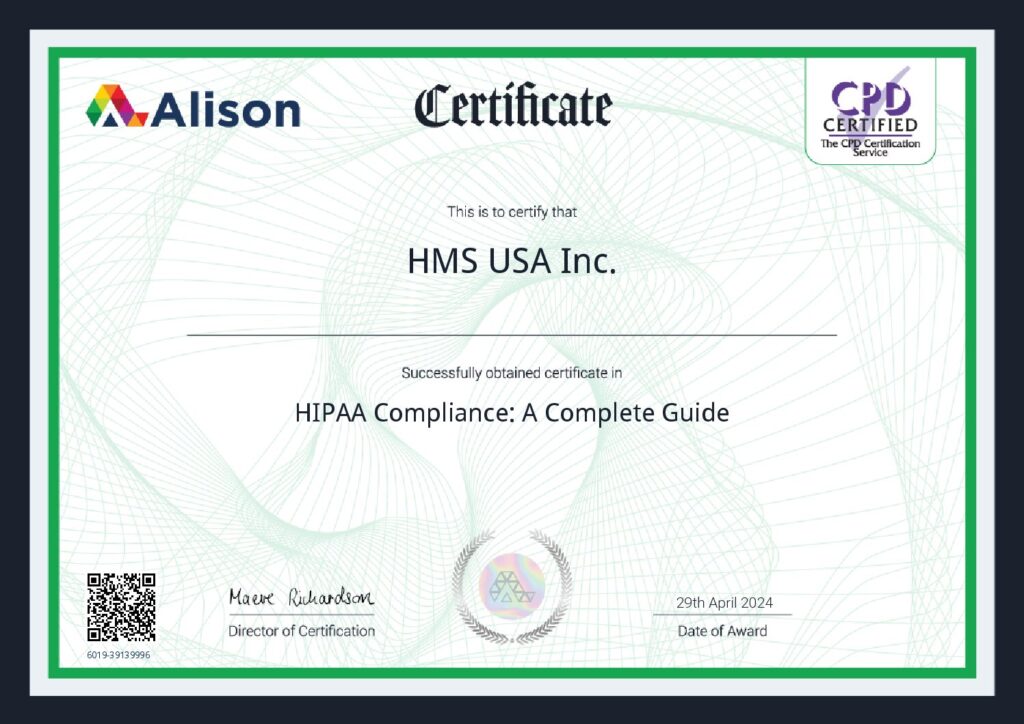Neurology billing demands precision. With hundreds of neurology CPT codes covering office visits, complex electrophysiology (EMG/NCS), EEGs, and neurosurgical procedures, even small documentation or coding mistakes can quickly lead to medical billing denials and lost revenue.
At the heart of accurate reimbursement are clear clinical notes, correct CPT selection, and proper modifier use, all designed to prevent errors in neurology medical billing and expedite claims through adjudication.
Moreover, this guide explains where neurology billing commonly breaks down, how to strengthen neurologic exam documentation, and practical tools (including a neurosurgery coding cheat sheet) your team can use to reduce denials and improve revenue cycle outcomes.
Common Errors in Neurology Medical Billing
Neurology practices often encounter the same recurring issues. Addressing these proactively will lower denial rates and save staff time.
Below are some of the most common errors and how to avoid them.
1. Misuse of Neurology CPT Codes
Coders may select the wrong CPT for an EMG, NCS, or EEG variation, such as confusing ambulatory EEG code sets or misstating levels of complexity for E/M visits. When multiple tests are performed on the same day, failing to sequence codes or apply the correct modifiers can result in payer edits and denials. Use specialty-specific encoder logic and reference guides to avoid these mistakes.
2. Confusion with neurology consult CPT code selection
Consultation vs. standard E/M codes has been an area of change and payer variation. Some payers no longer accept traditional consult codes in certain settings, while others require documentation that meets specific consultation criteria. Confirm payer policy before billing consult codes to avoid rejections.
3. Incomplete Neurologic Exam Documentation
The chart must display a comprehensive history, focused exam findings, test results, and the medical decision-making that supports the billed CPT level. Vague notes (e.g., “neurologic exam performed”) are insufficient. Completing, time-stamping, and clearly documenting exam components reduces claim denials and strengthens the appeal process.
4. Diagnostic vs. procedural miscoding
Confusing diagnostic testing (EEG, EMG/NCS) with interventional procedures (nerve blocks, spinal injections) leads to wrong code families and billing issues. Confirm whether the service is diagnostic, interventional, or both, and code accordingly.
Why these Errors Lead to Medical Billing Denials
Denials often result from:
- Payer edits (NCCI, bundling rules) block combinations of CPTs.
- Missing or inadequate documentation for E/M levels or procedure necessity.
- Incorrect modifier use (or missing modifiers) that would justify a separate payment.
- Using pre-billing scrubs and payer-specific logic reduces these common denial triggers.
Key technical area: Modifiers & edits (practical guidance)
Modifiers are powerful but risky. For example, modifier 59 and the more specific CMS “X” variants (XE/XS/XP/XU) are intended to indicate distinct procedural services; however, misuse can prompt audits. Follow NCCI/CMS guidance carefully and document the clinical rationale when bypassing edits.
Best Practices to Prevent Errors in Neurology Medical Billing
- Strengthen Neurologic Exam Documentation
- Use templates that capture problem-focused, extended, or complete neurologic exam elements depending on visit complexity.
- Include objective findings (strength, reflexes, coordination, cranial nerve exam) and tie them to clinical decisions. Good documentation supports the selection of CPT codes and demonstrates medical necessity.
- Maintain a Current Neurosurgery Coding Cheat Sheet
A concise reference for common brain, spine, and peripheral nerve procedures keeps coders from hunting through codebooks mid-claim. Include standard CPT ranges, typical modifiers, bundling notes, and payer variances.

Quick Neurosurgery Cheat (example entries)
- Craniotomy for tumor — CPT range: 61510–61512 (document approach & laterality).
- VP shunt placement — 62223 (note revisions/ removals separately).
- Laminectomy lumbar — 63047 (use additional-level codes like 63048 per level).
(Include a living internal cheat sheet with payer-specific tips.)
- Use Targeted Training Focused on Neurology CPT Codes
Monthly case reviews and coding clinics (provider + coder) reduce misunderstandings around consults, E/M levels, and procedure documentation.
- Leverage Technology, but Retain Human Oversight
Encoders, EHR-integrated checklists, and AI-assisted coding suggestions speed work and flag likely errors, but always require clinician/coder validation to ensure accuracy and compliance.
- Run Proactive Audits and Denial Root-Cause Analysis
Track top denial reasons (e.g., lack of documentation, bundling, wrong CPT) and correct workflows. Use the findings to update templates, training materials, and cheat sheets.
Neurosurgery Coding Cheat Sheet
A neurosurgery coding cheat sheet is a helpful tool that makes billing easier and more accurate. It lists the most common CPT and ICD-10 codes used for brain, spine, and nerve procedures, all in one place.
| Category | Common Procedure | CPT Code(s) | Notes / Tips |
| Brain Procedures | Craniotomy for tumor removal | 61510–61512 | Use based on tumor location and approach (supratentorial vs. infratentorial). |
| Ventriculoperitoneal (VP) shunt placement | 62223 | Include separate code if the shunt is revised or removed. | |
| Brain biopsy | 61750 | Use a modifier if done with another procedure. | |
| Spinal Procedures | Laminectomy (lumbar) | 63047 | Use 63048 for each additional level. |
| Spinal fusion (cervical) | 22551–22552 | Verify if instrumentation codes apply. | |
| Discectomy | 63030 | Ensure the correct level and approach are documented. | |
| Peripheral Nerve Procedures | Carpal tunnel release | 64721 | Standard outpatient neurosurgery code. |
| Ulnar nerve decompression | 64718 | Use a modifier if bilateral. | |
| Pain & Stimulator Procedures | Spinal cord stimulator trial | 63650 | For temporary lead placement. |
| Spinal cord stimulator implant | 63685 | Permanent system placement. | |
| Imaging Guidance | Stereotactic computer-assisted navigation | 61783 | Use only when imaging guidance is separately documented. |
This quick reference helps coders select the correct codes more efficiently, reducing mistakes that can lead to claim denials or payment delays. It also includes essential details, such as when to use modifiers, how to document procedures correctly, and which payer rules to follow.
Errors in neurology medical billing can lead to lost time and revenue. At HMS USA, Inc., we specialize in neurology coding audits, documentation templates, and payer-specific claim scrubbing to minimize denials and speed up payments.
Updating for CPT Changes and Payer Rules (action steps)
CPT updates (including the 2025 code set) introduced numerous new and revised codes; therefore, coders must update their internal encoders, retrain staff, and confirm payer implementations to prevent accidental miscoding. Regularly review AMA and specialty society guidance and incorporate CPT updates into your pre-bill scrub rules.
Collaboration: Clinicians + Billing Teams (why it matters)
Frequent case reviews and short, structured feedback loops (e.g., weekly 15-minute huddles) ensure that clinical nuance is reflected in documentation and coding. When neurologists and coders align on terminology and documentation expectations, the claims process becomes more efficient, and appeals decrease.
Bottom Line
Preventing coding errors in neurology billing takes teamwork, communication, and consistency. Regular reviews and strong documentation help ensure accuracy and compliance, leading to fewer denials and faster payments.
By establishing transparent processes and keeping everyone informed, neurology practices can achieve more effective billing results and long-term success.
For professional help with accurate and compliant neurology billing, contact HMS Group Inc. Their experienced billing experts can help your practice simplify billing, reduce errors, and improve revenue.
FAQs
What are the most common errors in neurology medical billing?
Wrong neurology CPT codes, incorrect modifier use, insufficient neurologic exam documentation, and confusion between diagnostic tests and procedures.
What is the correct CPT code for neurology consults for new patients?
Historically, outpatient consults were coded using 99242–99245; however, payer policies vary. Therefore, it is essential to check the payer’s policy before billing and confirm whether a standard new-patient E/M (99202–99205) is required instead.
How does a neurosurgery coding cheat sheet help?
It centralizes common CPTs, modifier rules, and documentation tips, allowing coders to verify choices quickly and consistently, thereby reducing errors and denials.
How can a neurosurgery coding cheat sheet help coders?
A cheat sheet provides coders with quick access to the most commonly used neurosurgery codes and modifiers. It saves time, helps prevent errors, and keeps coding consistent across all procedures.
How often should coders be retrained?
At minimum annually (for CPT updates), but quarterly refreshers on denial trends and frequent payer rule shifts are best practice.








